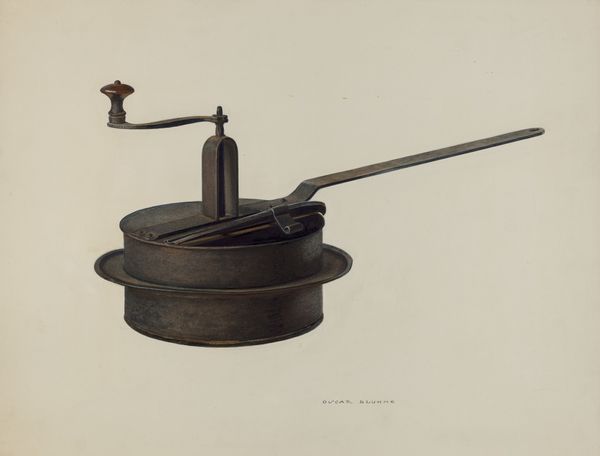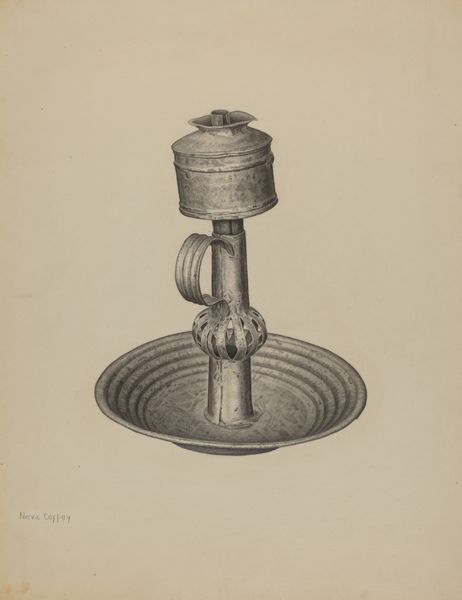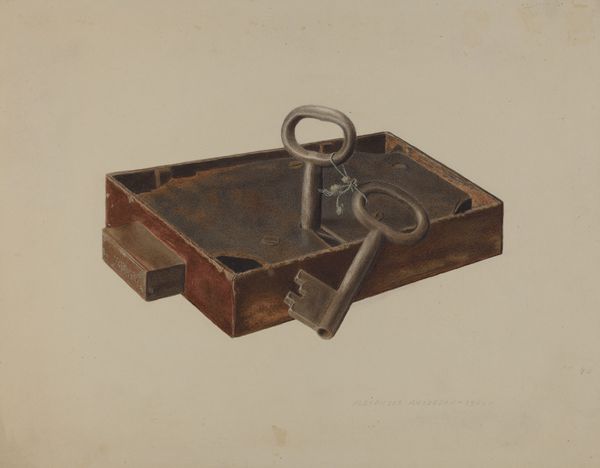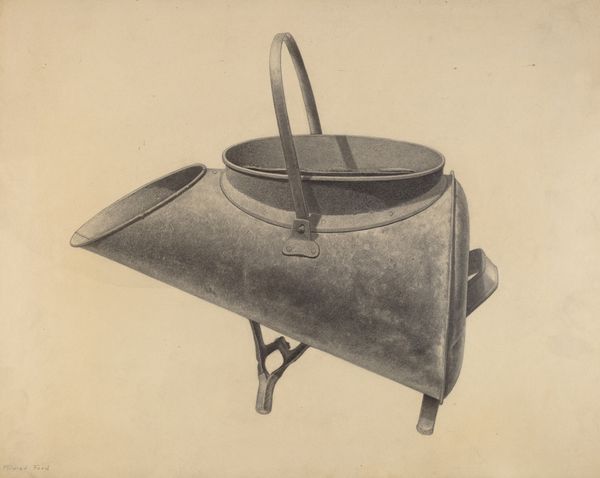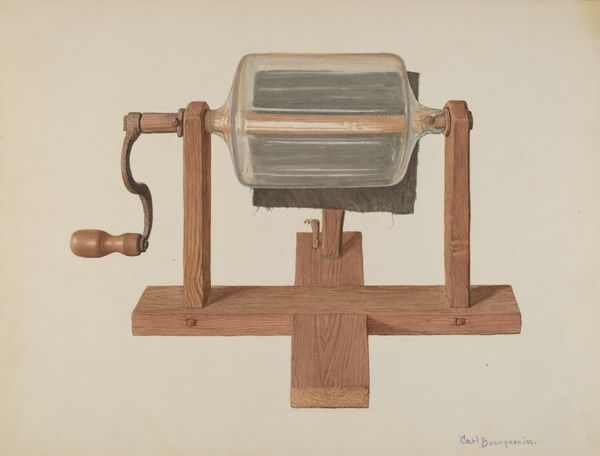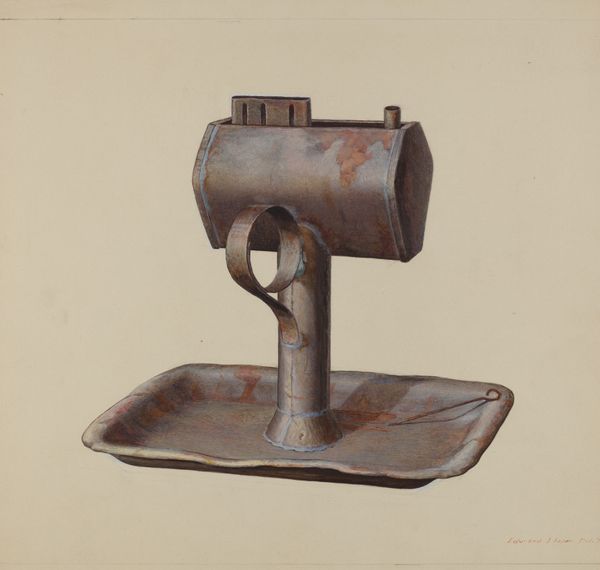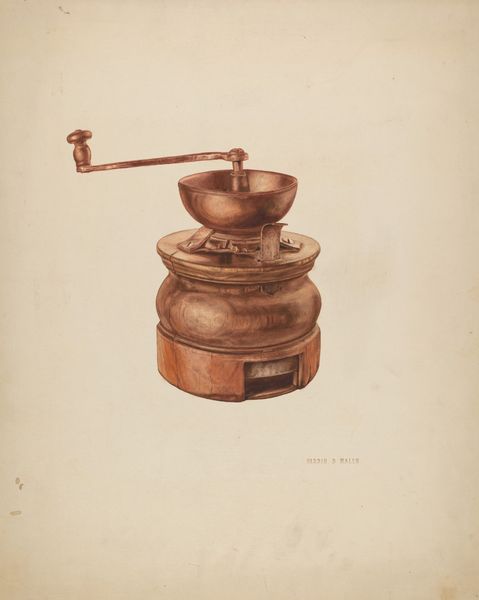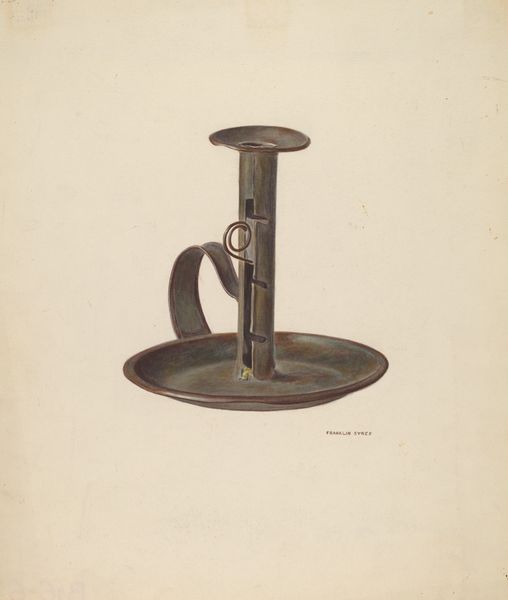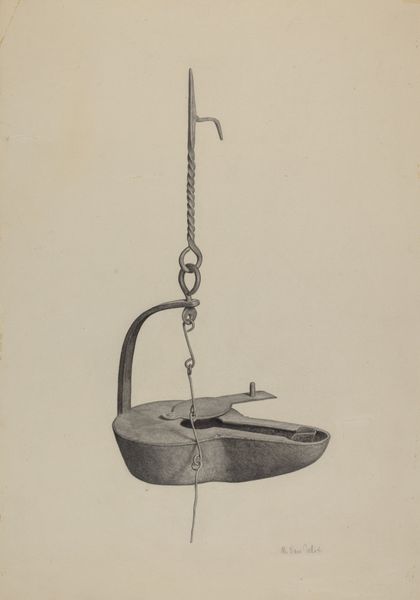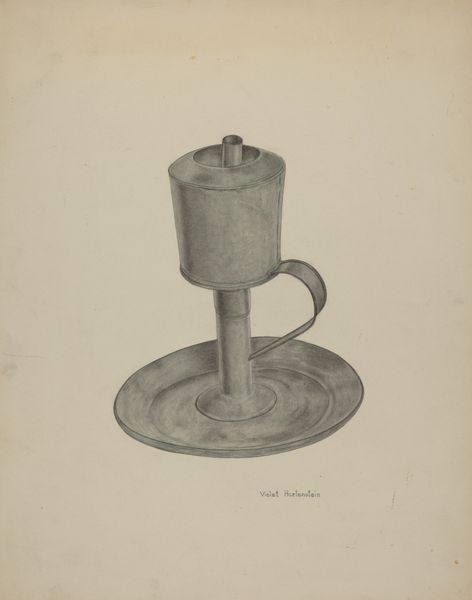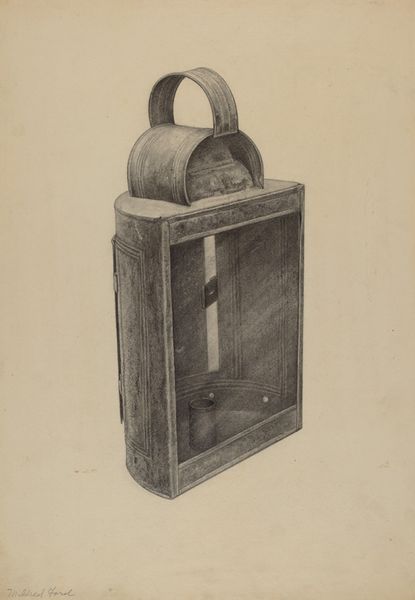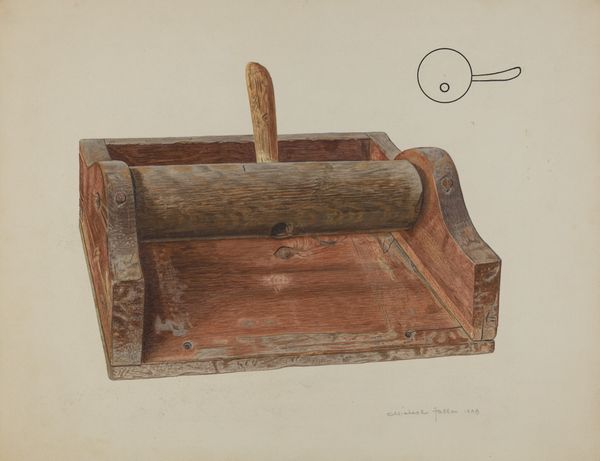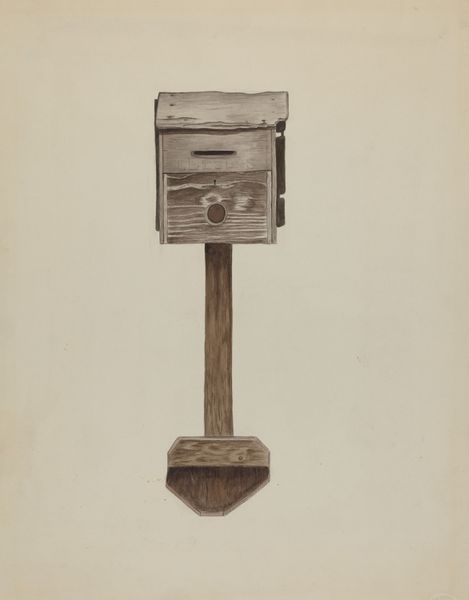
drawing, pencil
#
drawing
#
pencil drawing
#
pencil
#
realism
Dimensions: overall: 25.1 x 30.7 cm (9 7/8 x 12 1/16 in.)
Copyright: National Gallery of Art: CC0 1.0
Curator: Before us is "Whale Oil Lamp," a pencil drawing by Francis Law Durand, likely created between 1935 and 1942. What are your initial impressions? Editor: It’s stark, almost ghostly. The monochrome palette certainly contributes, but it's also the composition; the lamp sits isolated, seemingly floating on the page. The precision of the drawing style contrasts sharply with the object’s inherent functionality. Curator: Absolutely. Consider Durand's meticulous use of line and shading to create a convincing three-dimensionality. The artist renders each surface – from the tray's braided edge to the lamp's reflective container – with subtle gradations of tone, expertly modeling form. There’s also a textural awareness at play. Editor: It does beg the question: why render something so utilitarian with such artistic seriousness? Was Durand interested in preserving a record of a vanishing technology, a pre-electricity symbol perhaps? Whale oil lamps would have been relics even then. Curator: I agree. Focusing on form, one notes how the sharp angularity of the lamp’s container balances against the curve of its stand. The lamp is both functional object and abstract sculpture. Also, the stark tonality makes a statement regarding color; perhaps the intention here is more documentary? Editor: Undoubtedly the rendering carries a sociological element. There is no setting around the lamp; its sheer presence and rendering make a historical, albeit silent statement, about energy sources, domestic life, and perhaps even early environmental concerns. Curator: Good point about its possible ecological resonances. Durand directs our attention to the simple lines of these once crucial domestic tools. If not for electric lights, many households were sustained via this technology. Perhaps by stripping the object of excess detail, we can consider how we can strip the world of needless excess too. Editor: The visual emphasis underscores its social role, too. The drawing preserves something of an object from history, removed now from immediate utility, transformed into cultural evidence. Its presence urges introspection about past practices. Curator: Thank you. These different interpretations really helped us illuminate Durand’s “Whale Oil Lamp.” Editor: Indeed. Durand’s dedication gives way to multiple historical and artistic conversations, thus highlighting why, in its very silent stance, the drawing demands contemplation.
Comments
No comments
Be the first to comment and join the conversation on the ultimate creative platform.
